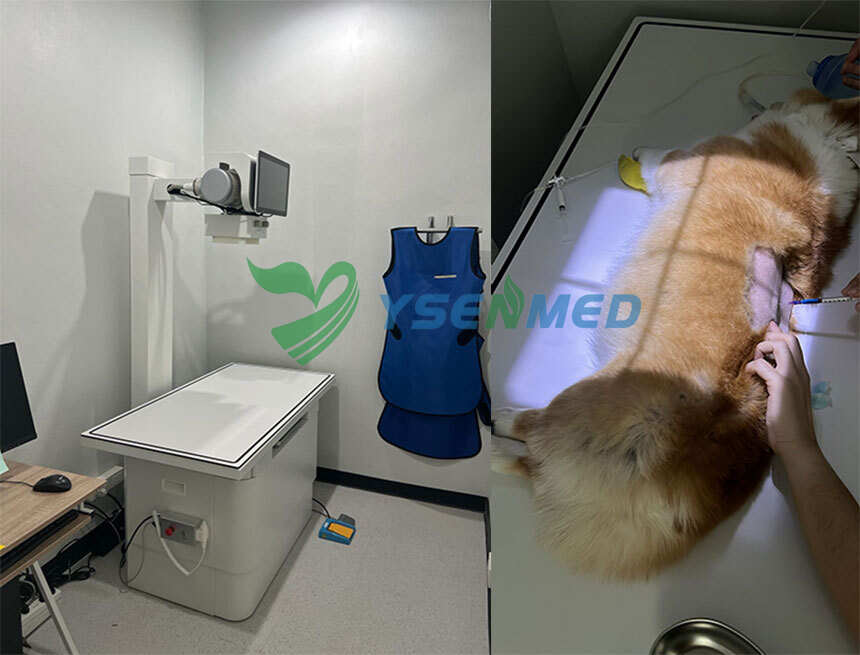Title: The Role of Medical Digital X-ray Systems in Trauma and Emergency Care
Introduction:
Set the context by highlighting the critical importance of swift and accurate diagnostics in trauma and emergency care.
Introduce the role of medical digital X-ray systems as indispensable tools in assessing injuries and facilitating prompt decision-making.
Section 1: Evolution of X-ray Technology in Emergency Medicine:
Provide a historical overview of X-ray technology in emergency medicine.
Highlight the evolution from traditional film-based X-rays to modern digital X-ray systems.
Section 2: Understanding Medical Digital X-ray Systems:
Explain the fundamental principles of medical digital X-ray systems.
Discuss how these systems differ from conventional film-based X-rays and their advantages in emergency care.
Section 3: Portable Digital X-ray Systems:
Explore the significance of portable digital X-ray systems in emergency settings.
Discuss their portability, ease of use, and the ability to obtain rapid images at the bedside.
Section 4: Speed and Efficiency in Digital Imaging:
Highlight the speed and efficiency of digital X-ray systems in acquiring and processing images.
Discuss how quick image acquisition contributes to prompt diagnosis and treatment decisions in emergency situations.
Section 5: Diagnostic Accuracy and Image Quality:
Discuss the superior diagnostic accuracy and image quality offered by digital X-ray systems.
Explore how high-resolution imaging aids healthcare professionals in identifying and assessing traumatic injuries with precision.
Section 6: Applications in Skeletal Trauma:
Explore the specific applications of medical digital X-ray systems in assessing skeletal trauma.
Discuss their role in detecting fractures, dislocations, and other orthopedic injuries in emergency scenarios.
Section 7: Soft Tissue Injuries and Digital Radiography:
Discuss the capability of digital X-ray systems in detecting soft tissue injuries.
Explore their role in identifying injuries to organs, blood vessels, and other soft tissues in trauma patients.
Section 8: Advanced Imaging Modalities in Emergency Radiology:
Explore the integration of advanced imaging modalities with digital X-ray systems.
Discuss how combining X-ray imaging with technologies like CT scans enhances diagnostic capabilities in emergency radiology.
Section 9: Pediatric Trauma and Digital X-ray Systems:
Discuss considerations for pediatric trauma cases and the role of digital X-ray systems in imaging children.
Highlight the importance of minimizing radiation exposure in pediatric emergency care.
Section 10: Trauma Protocols and Digital Radiography:
Explore established trauma protocols and how digital radiography aligns with these protocols.
Discuss the systematic approach to using X-ray imaging in trauma assessment.
Section 11: Role in Head and Neck Injuries:
Discuss the role of digital X-ray systems in evaluating head and neck injuries.
Explore their utility in identifying fractures, dislocations, and soft tissue injuries in the craniofacial region.
Section 12: Chest Trauma Assessment with Digital X-rays:
Explore the application of digital X-ray systems in assessing chest trauma.
Discuss their role in detecting rib fractures, pneumothorax, and other thoracic injuries in emergency situations.
Section 13: Abdominal Trauma Imaging:
Discuss the use of digital X-ray systems in imaging abdominal trauma.
Explore their role in identifying injuries to abdominal organs, detecting free air, and aiding in triage decisions.
Section 14: Extremity Trauma and Digital Radiography:
Explore the role of digital radiography in assessing extremity trauma.
Discuss how X-ray imaging helps identify fractures, dislocations, and soft tissue injuries in limbs.
Section 15: Integration with Electronic Health Records (EHRs):
Discuss the integration of digital X-ray images with electronic health records.
Explore how seamless data sharing enhances continuity of care and information accessibility in emergency settings.
Section 16: Training and Proficiency in Digital Radiography:
Emphasize the importance of training and proficiency among healthcare professionals using digital X-ray systems in trauma care.
Discuss ongoing education and certification programs to ensure accurate interpretation of images.
Section 17: Regulatory Compliance and Quality Assurance:
Examine the regulatory landscape surrounding the use of digital X-ray systems in emergency care.
Discuss the importance of adherence to quality assurance standards and regulatory approvals.
Section 18: Telemedicine and Remote Radiology in Emergencies:
Discuss the role of digital X-ray systems in telemedicine and remote radiology for emergency care.
Explore how remote image interpretation facilitates expert consultations and decision-making in critical situations.
Section 19: Economic Considerations and Cost-Effectiveness:
Explore the economic considerations of implementing digital X-ray systems in trauma and emergency care.
Discuss their cost-effectiveness in terms of improved patient outcomes and potential savings in overall healthcare expenditures.
Section 20: Global Accessibility and Challenges in Adopting Digital X-ray Technology:
Examine the global accessibility of digital X-ray technology in emergency care.
Discuss challenges in resource-limited settings and initiatives aimed at improving access to this technology on a global scale.
Section 21: Public Awareness and Education:
Emphasize the importance of public awareness and education regarding the role of digital X-ray systems in trauma and emergency care.
Discuss initiatives aimed at educating the public about the benefits of rapid and accurate diagnostics in emergencies.
Section 22: Future Trends in Digital X-ray Technology:
Explore future trends and innovations in digital X-ray technology for trauma and emergency care.
Discuss ongoing research, potential breakthroughs, and the evolving landscape of these technologies in emergency radiology.
Conclusion:
Summarize the key points discussed in the article.
Emphasize the indispensable role of medical digital X-ray systems in trauma and emergency care, contributing to timely and accurate diagnostics for improved patient outcomes.




